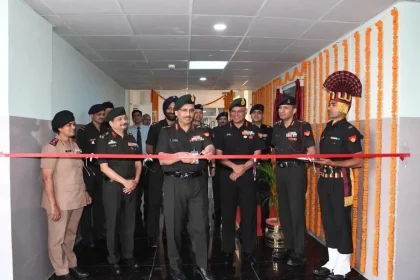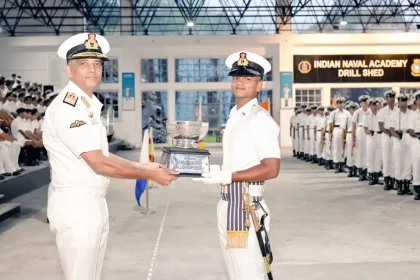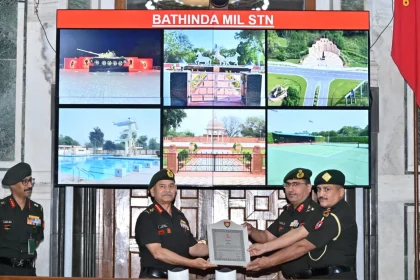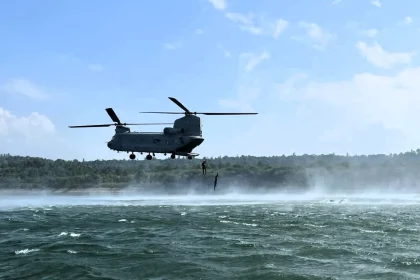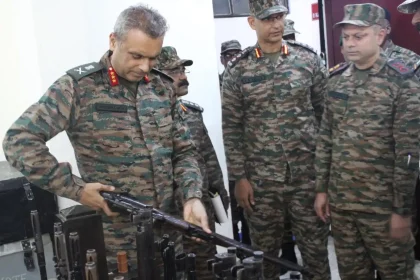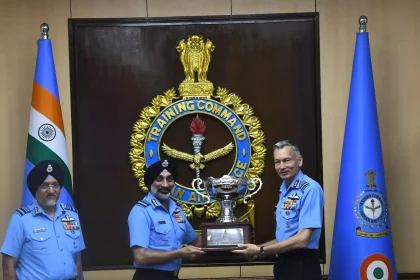DGMS (Army) Inaugurates New Officers’ Ward Complex at AHRR
Lt Gen CG Muralidharan, Director General Medical Services (Army), inaugurated and dedicated a new four-storied Officers’ Ward Complex at the…
Daredevil Squadron Wins Inter-Squadron Drill Competition at INA
The Indian Naval Academy (INA) hosted the Inter-Squadron Drill Competition, a hallmark event that showcased the cadets’ impeccable standards of…
Sapta Shakti Command Wins Top Honours for Clean, Green & Sustainable Stations 2025
Bathinda, Sri Ganganagar, and Hisar Stations under Sapta Shakti Command honoured by COAS for outstanding achievements in cleanliness, sustainability, and…
Special Forces Training School Conducts Advanced Helocasting Exercise from CH-47 Chinooks
Elite warriors of the Indian Army’s Special Forces demonstrated advanced water infiltration skills during a high-intensity Helocasting exercise from CH-47…
Lt Gen Virendra Vats Visits NCC Directorate Karnataka & Goa, Encourages Youth Empowerment and Training Excellence
The NCC Directorate Karnataka & Goa continues to play a pivotal role in nurturing future leaders through its diverse training…
Air Chief Marshal AP Singh Chairs Training Command Commanders’ Conference 2025 at Bengaluru
The Training Command, headquartered in Bengaluru, is responsible for formulating and implementing policies and strategies for the training of IAF…

